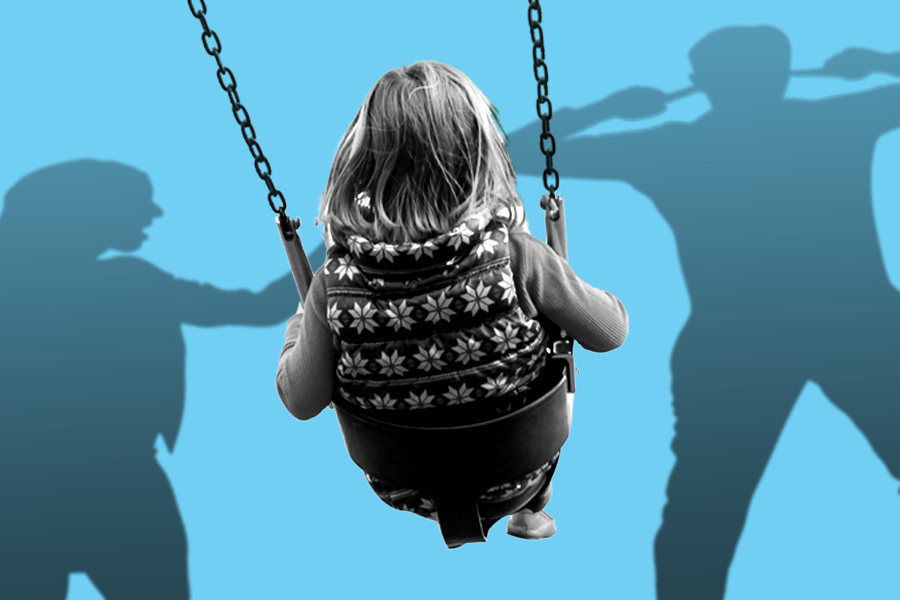No one wants to fight in front of their children. But life is complicated and people are short-circuiting experiments in evolution, so parents must make a choice: hash it out in front of the kids over Saturday morning cartoons, or retreat behind closed doors to go head to head.
The trouble is, if kids are sponges who pick up on everything eventually, and conflict is unavoidable, then what? Is there ever an upside to fighting in front of your kids? Turns out most conflict is bad, but you can do it right so that kids learn something good from it.
Let’s start with the bad. New research suggests witnessing parental conflict can mess with your ability to perceive emotions accurately, even when the conflict is the sort you think is no big deal, the everyday fights you’d have over who loaded the dishwasher or who forgot to do the laundry. The study, out of the University of Vermont, looked at nearly 100 9-to-11 year olds who reported how much conflict they saw between their parents, and how much they thought it threatened the stability of the marriage. The children were then asked to identify the emotions in a series of photographs of a couple who presented as angry, neutral, or happy.
The results were telling: Children from what researchers called low-conflict homes were easily able to identify which emotion was what in all three scenarios, but children from higher-conflict homes where they felt the parental relationship was unstable could pick out happy or sad, but not neutral.
“If their perception of conflict and threat leads children to be vigilant for signs of trouble, that could lead them to interpret neutral expressions as angry ones or may simply present greater processing challenges,” lead author of the study Alice Schermerhorn said in a press release. In other words, if you’re always on alert looking for the next fight to brew, you might lose the ability to process the in-between expression.
What’s interesting here is that Schermerhorn told the New York Times that she expected them to be bad at reading all the faces because they were so accustomed to the hypervigilance children develop when dealing with constant conflict. But it was only the neutral ones they couldn’t parse, suggesting that in some ways, that children of those environments actually lose the ability to parse what the in-between phase means. That’s sad, because, as the NYT puts it, “Those most in need of a benign interaction often have the hardest time recognizing one.” You can, it seems, prime a child so consistently on the negative that they fail to recognize the respite.
But contrast this with a recent piece by psychology professor at Wharton, Adam Grant, on why we should fight in front of our children, based on research that more creative people often come from families where tension is the norm. His argument is that values clashes in families help children build a thicker skin, foster creativity and even innovate. “If we rarely see a spat,” he writes, “we learn to shy away from the threat of conflict.” He cites a number of highly creative teams who benefited from disagreement: The Beatles, Steve Jobs and Steve Wozniak, Elizabeth Cady Stanton and Susan B. Anthony.
But the distinction between Grant’s argument and the current research is simple and important: It’s one thing to clash over an idea (as an adult, no less) about how to invent something, write a song, win a vote or build an aeroplane and quite another to watch your parents shred each other over money problems, infidelity, or how to raise you, when you’re hardly developed enough to make sense of it. Idea debates encourage passionate intellectual growth, but family instability just makes you wonder if your parents can afford to eat or if one of them just might not come home one day.
That said, there is a way parents can show conflict in the home without disrupting every child’s right to a stable home environment. And the answer is: very, very carefully. Parents should largely be able to convey stability and harmony at home. But when disagreements arise, they can be an opportunity to show children that arguing is okay and normal and even healthy — that two people can disagree and still respect and love each other. That you can have a different opinion, work through it, and arrive at a compromise or solution that makes everyone feel valued and important.
Experts say you can do this by keeping the anger at bay, focusing on the behavior that’s at issue, and not the person, and treating the situation as an opportunity for everyone to have a voice. Richard Gallagher at the Parenting Institute of NYU’s Child Study Center told Parents Magazine that you should focus on not trying to “win” the argument, and by not ever making your children be referees. “Children should never have to divide their loyalties,” Gallagher said. “When you start to hear, ‘Mommy, don’t be mad at Daddy,’ it’s a red flag that you need to tone it down.”
It’s also critical that you show the resolution to the argument. The making demonstrates that even when adults disagree, they still care about each other and aren’t going anywhere. It creates the sense that there’s a process through which disagreements can be addressed and resolved. You can do that by only letting kids see disagreements that have concrete resolutions, not endless, lingering abstract worry attached. If money is tight and you’re hammering out how to spend it, make sure you reinforce, Gallagher notes, that there’s still enough to take care of the kids. And obviously, the subject matter matters. There is no cool, intellectually stimulating way to hash out your bad sex life or shitty feelings about your in-laws with children around.
Of course, if you have kids and you don’t know that much already, you’re probably too busy arguing badly in front of them to realize it, much less sideline those conflicts to introduce more dispassionate debate.

